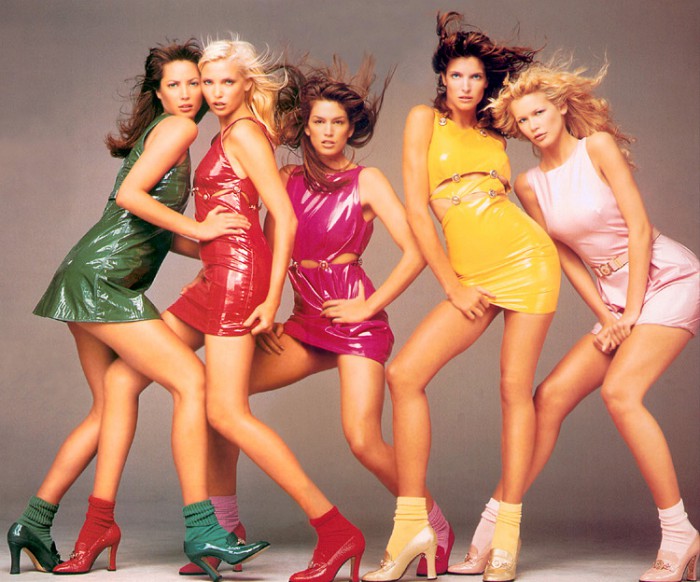
1990s Supermodels: Christy Turlington, Nadja Auermann, Cindy Crawford, Stephanie Seymour and Claudia Schiffer in Versace 1994 Campaign
What does it mean to be a supermodel? The definition has change greatly throughout the years. Discover a brief history of the supermodel ranging from the 1940s to 2015 and on with familiar faces including Kate Moss, Twiggy, Karlie Kloss, Gisele Bundchen and more.
————————————-
Early Beginnings: The 1940s-50s
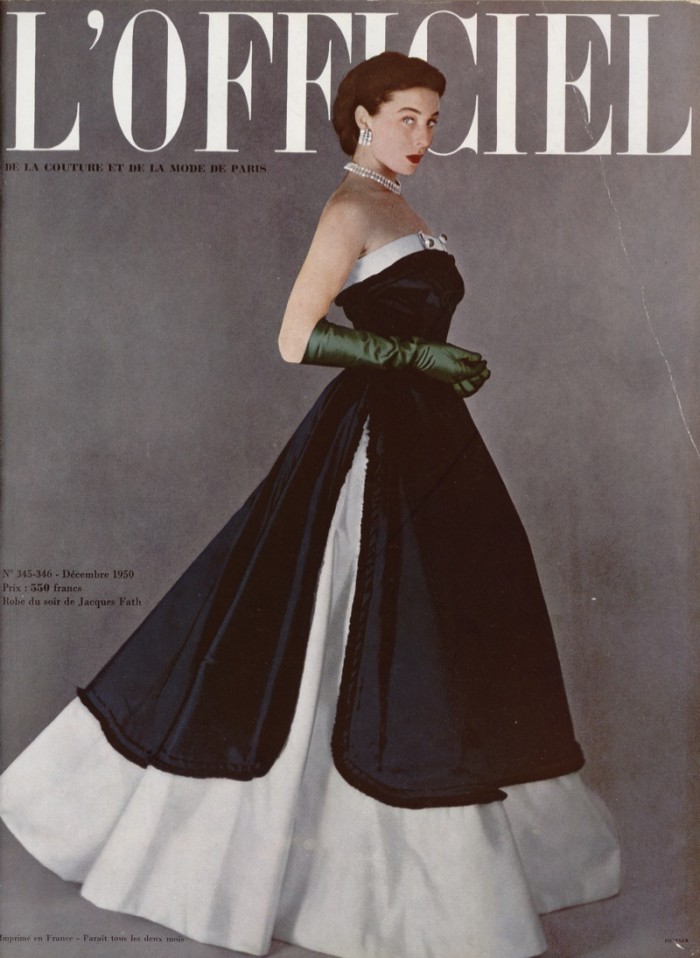
Bettina Graziani on the cover of L’Officiel Paris (1950)
The first beginnings of the supermodel started in the 1940s and 1950s with Bettina Graziani also known simply as just Bettina. Working with influential designers including Christian Dior and Hubert de Givenchy, her small waist helped define the ‘New Look’ fashions of Dior. Bettina reportedly commanded $1,300 an hour or over $11,000 in today’s value.
————————————-
The 1960s: Twiggy & Beyond
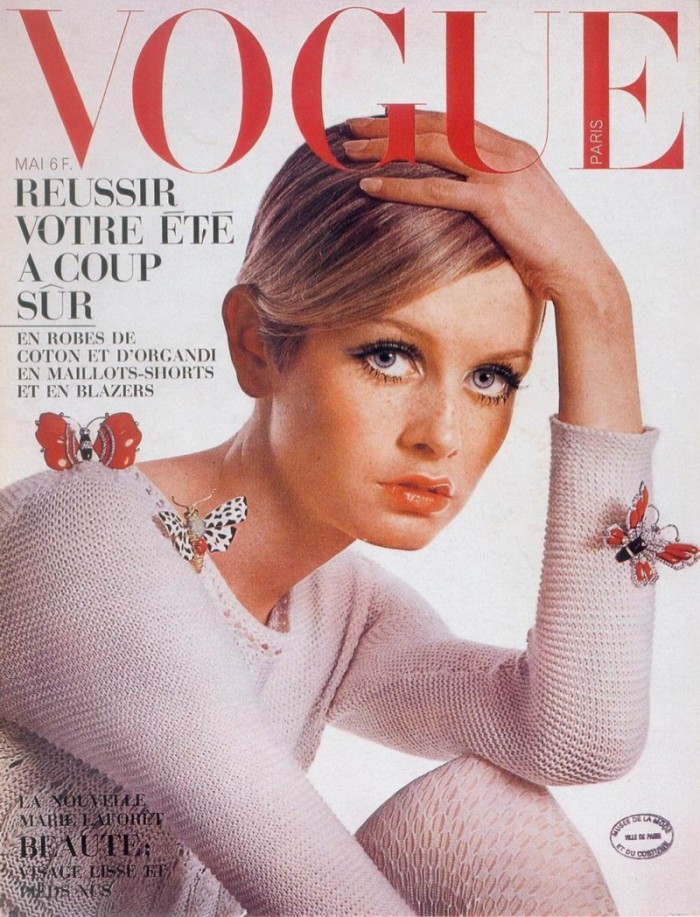
Twiggy on 1967 cover of Vogue Paris
In the 1960s, Twiggy popularized a new look. Perhaps associated with the decline of the corset, her stick thin frame, wide eyes and pixie haircut became forever associated with the mod movement. Jean Shrimpton was also a popular model of the era, helping to define the Swinging 60s. Towards the end of the decade, Naomi Sims, was was considered the the first black supermodel of her time, was the first African-American model to appear on the cover of Ladies’ Home Journal as well as Life Magazine.
————————————-
1970s: Lauren Hutton & Beyond
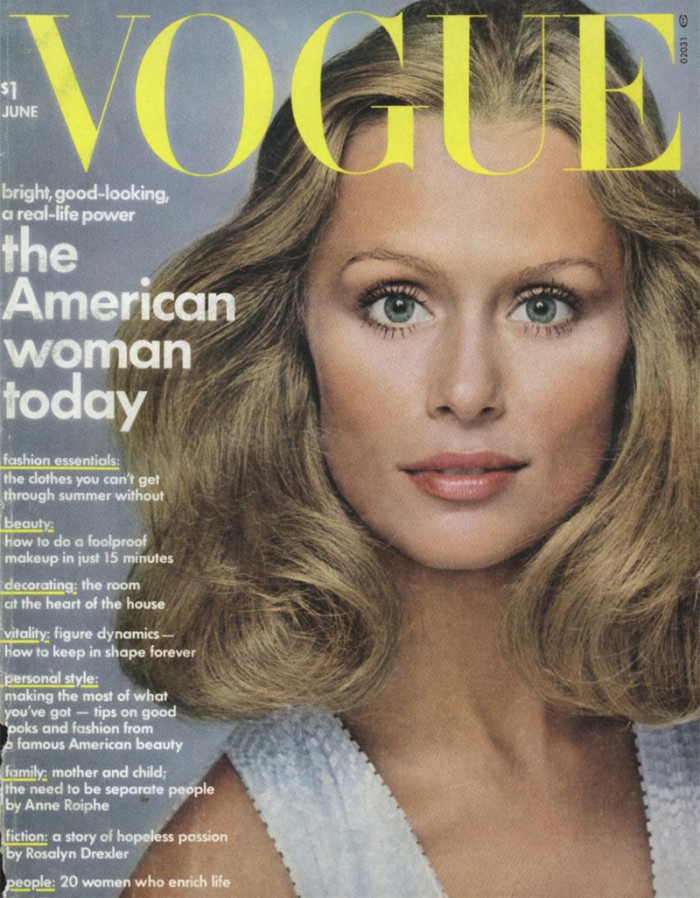
Lauren Hutton on the August 1973 cover of Vogue
The 1970s ushered in new models. Lauren Hutton with her unique gap-tooth look landed her the distinguished honor of being the only model or celebrity to appear on American Vogue a record 26 times. In 1974, Beverley Johnson became the first black model in history to appear on the cover of American Vogue, opening the doors for models of color.
————————————-
1980s: Beginning of the Modern Supermodel

Elle Macpherson on Sports Illustrated Swimsuit Edition 1988 Cover
The 1980s saw the rise of the modern supermodel. Now, these women were not just recognizable, but they also endorsed products outside of fashion including Pepsi, Ford Trucks and more. Elle Macpherson aka “The Body” became famous for her history-making appearances in Sports Illustrated’s Swimsuit Issue—appearing a record-breaking number of five times. While models such as Cheryl Tiegs and Christie Brinkley were known for their girl next door appeal.
————————————-
1990s: Peak Supermodel Era
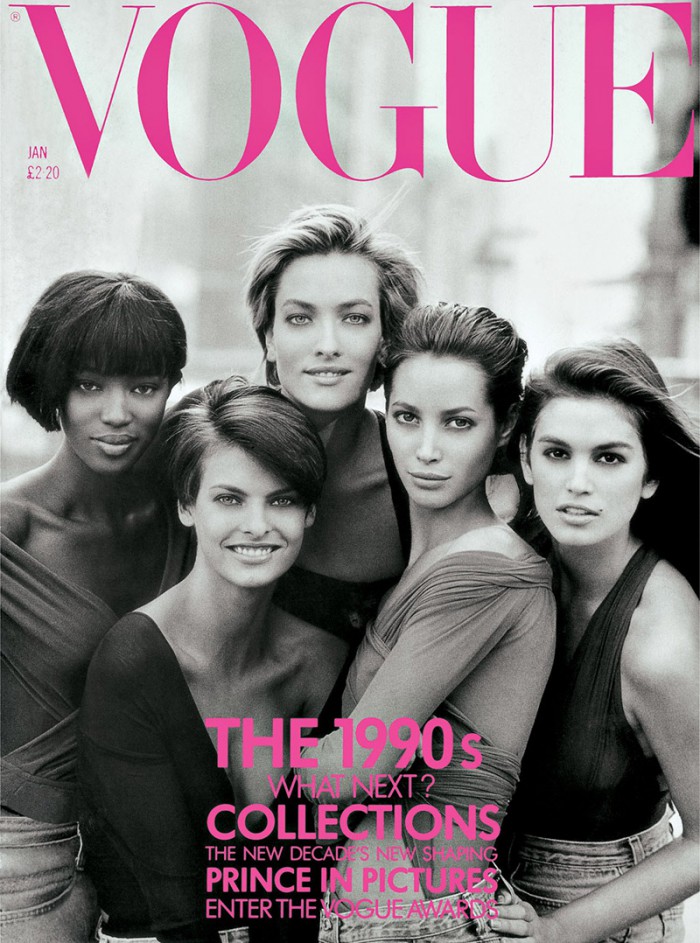
Vogue UK January 1990 Cover with Naomi Campbell, Linda Evangelista, Tatjana Patitz, Christy Turlington and Cindy Crawford
Thanks in part to actresses shying away from the fashion world, the 1990s were the heyday of the supermodel British Vogue named Naomi Campbell, Cindy Crawford, Christy Turlington, Linda Evangelista, and Tatjana Patitz the supermodels of their day. The girls were known for their personality as well as their personal lives including relationships with rock stars and actors. Evangelista even famously said that she did not get out of bed for less than $10,000 a day. The mid-90s also saw the rise of Kate Moss and the heroin chic look. By the late 90s, celebrities began to return to magazine covers and advertising campaigns–citing an end to the peak.
————————————-
2000s: The Model Mogul

Supermodel Gisele Bundchen (Photo: Shutterstock.com)
Although the exposure of the supermodel faded, there was still new supermodels who emerged in the 2000s. Thanks to Victoria’s Secret and its lucrative Angel contract, Gisele Bundchen, Tyra Banks and Hedi Klum became household names. Unlike previous decades, many of the models turned their careers into business opportunities. Klum became known for her hosting job on ‘Project Runway’ while Banks launched ‘America’s Next Top Model’ and Bundchen’s line of sandals and apparel company in Brazil has helped her rank number 1 on Forbes’ Highest Paid Models list for many years.
————————————-
2010 to Present Day: The Rise of the Social Supermodel
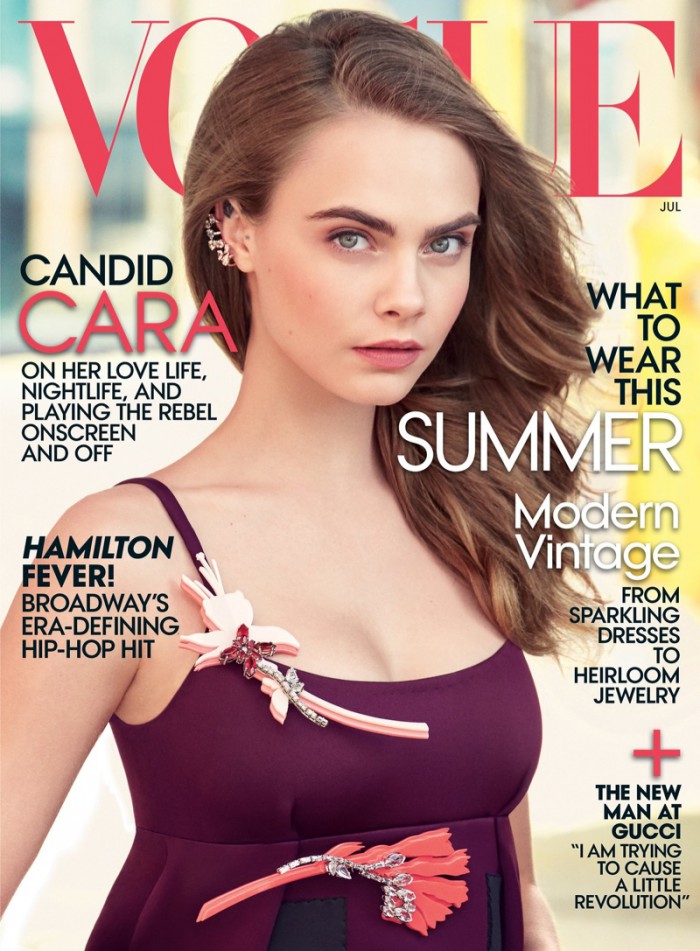
Cara Delevingne on the July 2015 cover of Vogue US
Unlike previous decades, 2010 and on has saw the rise of models through an unlikely place—social media. In a 2015 issue of Adweek, a modeling agent revealed that most top brands will not consider a model unless they have a large Instagram following (usually 500,000 and up). This has paved the way for models like Gigi Hadid, Kendall Jenner, Cara Delevingne and Karlie Kloss to “have more a voice” versus models of previous decades. Whether social media can bring back the heyday of the supermodel has yet to be seen, but there is no doubt that the internet has impacted the modeling industry greatly, and there is no looking back.
